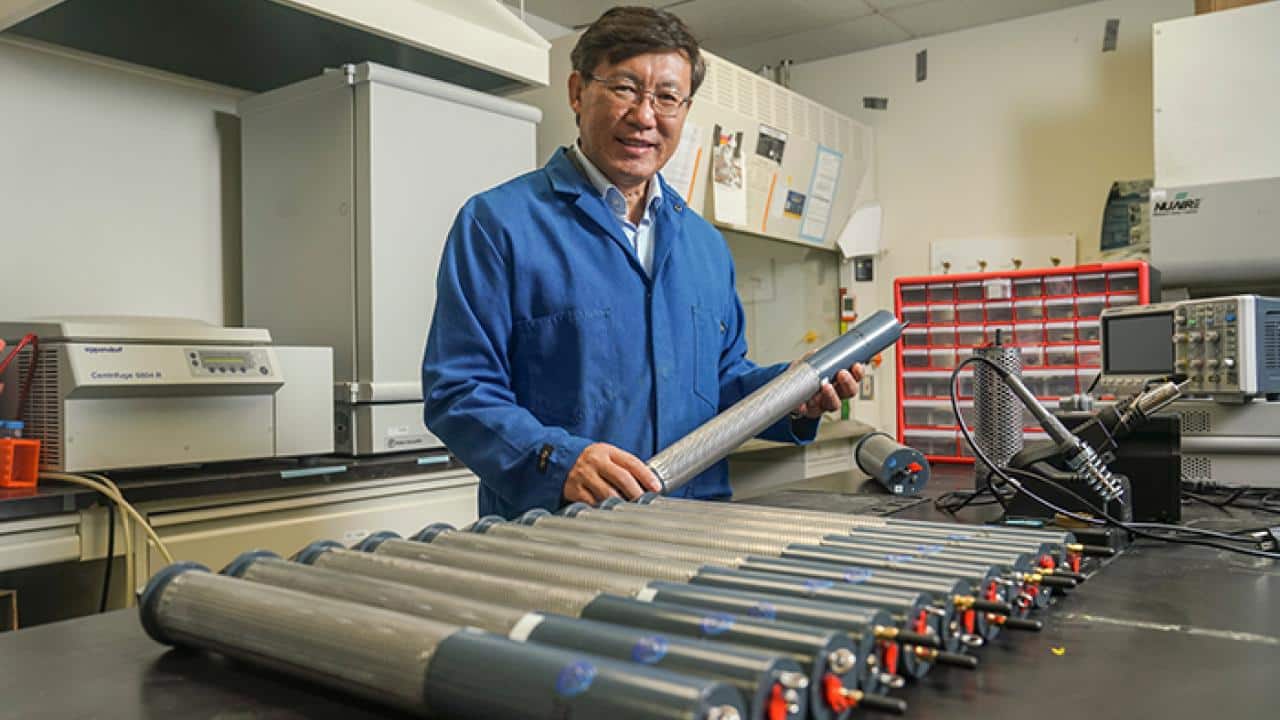Globally, post-harvest losses are not uncommon in the agricultural industry. Zhongli Pan, adjunct professor in the UC Davis Department of Biological and Agricultural Engineering, may have developed a solution to lessen post-harvest loss, according to a release.
Pan used Internet of Things (IoT) based technology in his project. This smart, wireless technology can be used to detect the early stages of insect activity remotely. Pan’s project can be used in storage, processing, handling and transportation to solve challenges relating to insect infestation. SmartProbe, adevice designed by Pan and his team, was utilized that employs wireless sensors and cameras while relying on cloud computing. The cloud computing monitors and predicts insect occurrences, which in turn will reduce fumigants and food loss by controlling insect pests. A project scientist in Pan’s lab, Ragab Gebreil, acted as a co-inventor on this new technology.
Almost 9% in developed countries and 20% or more in developing countries of post-harvest losses are caused by grain pests in storage, shared the release. The California Farmers’ Rice Cooperative reached out to Pan five years ago for assistance in combating the issue of insects in rice storage.
Currently, to inspect storage facilities, humans must manually enter the silos. The results can be inaccurate, and the task is expensive and time consuming. This type of manual inspection is not an option for all goods, like packaged products.
This led Pan and his colleagues to develop the SmartProbe Device. This device can take photographs of the insects in the goods while also taking readings on the temperature and humidity of the environment. The SmartProbe takes these readings through integrated sensors. Then, the device can send the photographs and sensor data to cloud servers by utilizing Wi-Fi. These servers use cloud computing to analyze the images and count the number of insects. The information and photos collected are sent to PestDetect, an app that facilities can use to see the information and decide what pest control action is needed.
“Through years of research, we found that the powerful technology we developed helps detect insects in the emerging phase before the damage is done,” said Pan. “Typically, the insects start from the top of stored or packaged product and move gradually to the bottom. With this new technology, we can do the surface treatment by using only a small amount (e.g. 26%) of the chemicals instead of fumigating the entire product, which is not desirable.”
This is a significant development, as Pan said this could reduce chemical use by 80%. Early detection and notification of insects with the device could help solve pest management problems like product loss, over or under use of chemicals, food and worker safety and high costs of management.
The California Rice Research Board and the Almond Board of California have dedicated facilities to work on Pan’s project. This allowed the team to discover that for a product like almonds, a significant amount of damage can be done very quickly by insects. At 13 commercial storage and processing facilities, Pan and his colleagues have successfully demonstrated the use and benefits of the new SmartProbe technology. These facilities included rice, almond and walnut storage.
The UC Davis Venture Catalyst Science Translation and Innovative Research (STAIR) grant program helped Pan advance the technology so it could be commercialized by forming his startup, AIVision Food Inc., during the 2021 to 2022 fiscal year.
“The STAIR grant was very helpful in bringing the technology from the lab to the marketplace and has been the greatest support to transition from concept to commercialization,” continued Pan. “Right now, AI is only helping detect what’s happening. When we have more of these kinds of smart devices, we’ll collect a lot of the data and then eventually the AI can use the data and models to predict where and when insect may occur, affording the opportunity to take action to prevent before the infestation starts. The technology will be important to sustainable food production and will reduce food loss and hunger in the world.”













